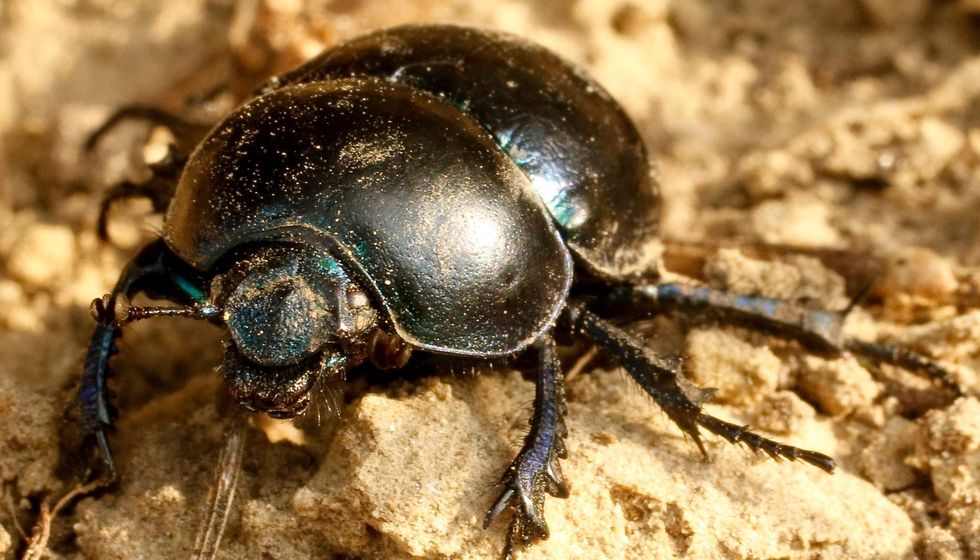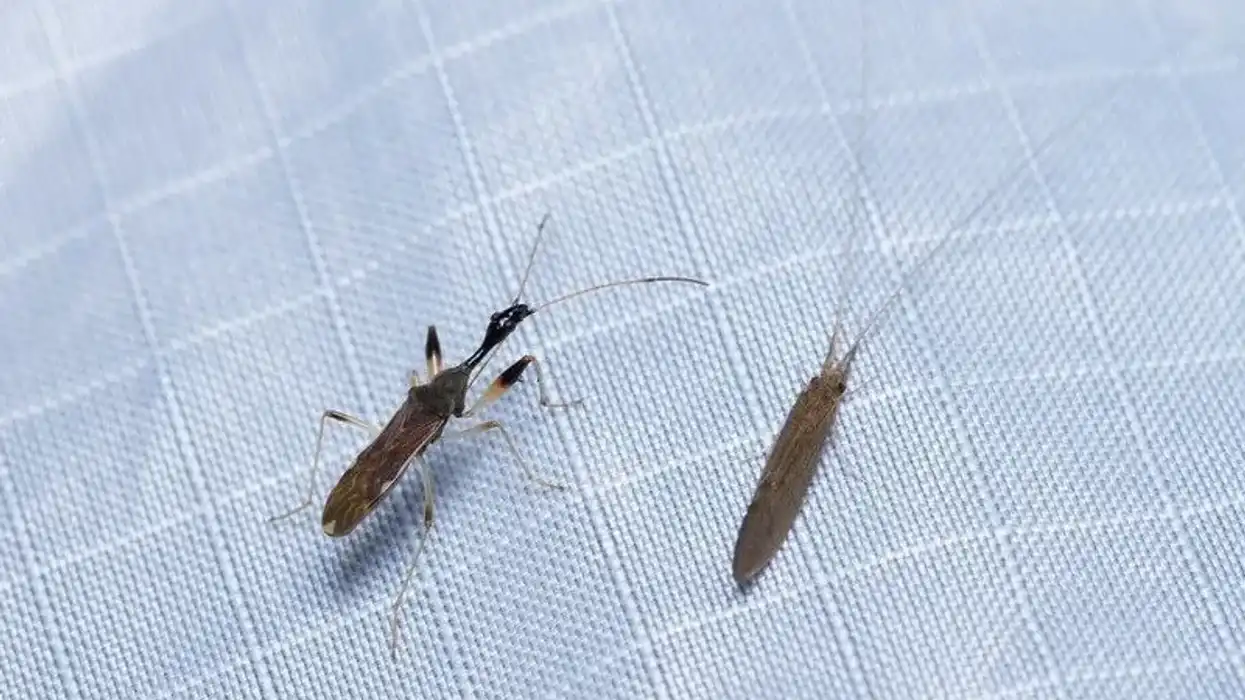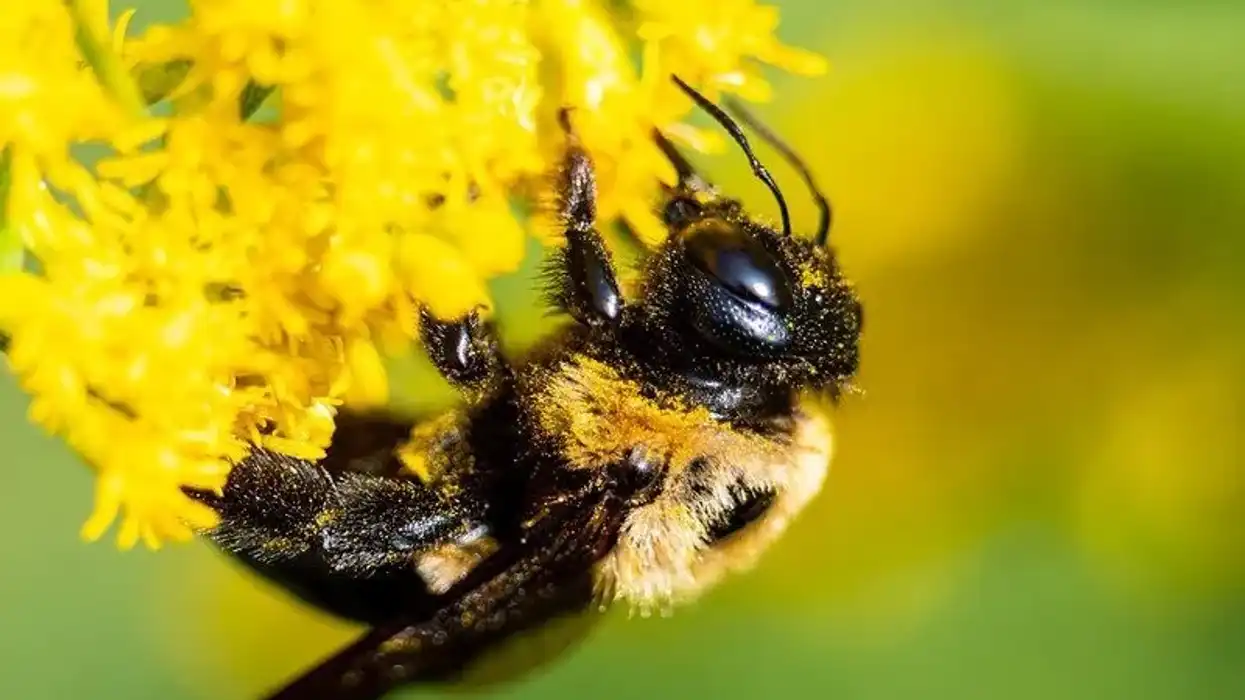Globally there are about 7 million species of terrestrial arthropods in the world. Tumble bugs are popularly known as part of the dung beetles family, which comprises 5000 species.
A tumblebug is a small dark-colored beetle that is usually spotted around the fecal matter of cows or other carnivorous animals. Their outer coat is shiny with a think-looking coat covering most of their body. They often get squished by larger species and their scientific name is Canthon spp.
Tumblebugs are scarab beetles that are not an endemic species. They are found in all regions of the world except Antarctica and are usually spotted near grasslands and desert habitats.
These dung beetles pose no significant threat to humans and don't attack or transmit diseases. Some species of tumblebugs are known to roll dung into balls and use this both as a source of food as well as a breeding chamber where they bury their eggs.
For more interesting content, check out some facts about the giant water bug and the wheel bug.
Tumble Bug Interesting Facts
What type of animal is a tumble bug?
The tumble bug is a type of dung beetle that belongs to the Kingdom Animalia, the order Coleoptera, and the family Scarabaeidae.
What class of animal does a tumble bug belong to?
The tumble bug (Canthon spp.) is a type of insect or scarab beetle that belongs to the class Insecta, the family Scarabaeidae, and the genus Canthon.
How many tumble bugs are there in the world?
The tumble bug's population in the world has not been counted, so their exact population is not known.
Where does a tumble bug live?
Tumble bugs live in desert habitats, grasslands, and regions near farms as well. They are seen in Mexico and the United States as well in other parts of the world.
What is a tumble bug's habitat?
A tumble bug's habitat constitutes deserts and grasslands as well as forests of various kinds. They are predominantly seen in Mexico and in the United States. They make efficient use of the waste secreted by animals and are resourceful creatures.
Who do tumble bugs live with?
A tumble bug is typically solitary, however, its likely you will spot more than one if you find a tumble bugs' ball. They coexist with other species in the wild.
How long does a tumble bug live?
A tumble bug is an insect and its lifespan is not evaluated however they live a relatively shorter lifespan than other animals. A queen termite is the oldest living insect in the world, with some scientists estimating that this termite lived for 100 years!
How do they reproduce?
Adult tumble bugs try to roll a ball of dung larger than themselves across the ground. The process, although complicated and cumbersome for these small species is admirable.
Females usually push from above while males push from below. Once the poop or dung is rolled the female lays a fertilized egg onto the round heap that is also popularly referred to as a brood ball.
This acts both as a nest for the juvenile and food for them as well after hatching. They approximately lay 10-80 eggs per clutch and bury them in the dung ball.
What is their conservation status?
These dung beetles' conservation status is Not Evaluated by the International Union for Conservation of Nature (IUCN).
Tumble Bug Fun Facts
What do tumble bugs look like?
A tumble bug or dung beetle is a small-sized insect. They have an overall dark-colored appearance as their outer shell constitutes brown, black and in some instances metallic blue or purple colors as well.
Male and female species are similar in appearance at first, however, if observed closely a male has a tooth-like projection on its back. These dung beetles' jaws are large. They have short antennae and their jaws are large and visible.
They have strong legs with hind legs that they use to push the ball forward. They use their legs for movement as well and they have a total of six legs.

*Please note that this image is of a forest dung beetle, not a tumble bug. If you have an image of a tumble bug please let us know at hello@kidadl.com.
How cute are they?
These small-sized beetles (tumblebugs) are cute in appearance specifically considering that they are not harmful. These tumblebugs are specifically admirable when they try to roll dung balls with so much effort.
How do they communicate?
Tumblebugs, similar to other species of insects, communicate via intraspecific communication. This communication can be used by organisms of their own kind as well as others and it is inaudible to the human ear.
How big is a tumble bug?
A tumblebug is 0.43-0.74 in (11-19 mm) in length which is 10 times bigger than the smallest insect in the world, a firefly which is 0.0005 in (0.127 mm) in size.
How fast can a tumble bug run?
A tumblebug's exact speed is not evaluated however, they are a moderately fast species. They are hard workers and get things done as soon as possible. The dragonfly species are known to be the fastest insects in the world and they can travel at 35 mph (56.32 kph.).
How much does a tumble bug weigh?
The average tumblebug weight is not evaluated. Males and females are similar in size and weight and neither of them gains weight easily. The tumblebug is extremely particular about the kind of poop they consume as food. They don't just feed on any kind of poop as food, but only that from specific animals.
What are their male and female names of the species?
Male and female tumblebugs or dung beetles are not addressed differently. Male and female species are similar in appearance at first, however, if observed closely the male has a tooth-like projection on its back. Male and female tumblebugs also differ in reproductive functions and are together responsible for securing food for their offspring by rolling balls of dung.
What would you call a baby tumble bug?
Baby tumblebugs are called grubs or larvae. Young larvae grow up and remove the feces once they hatch from their shells. These dung beetle larvae develop independently however their male and female parents lay the foundation for them to grow and survive best in.
What do they eat?
The tumblebug (dung beetle) is primarily a herbivore and these scarab beetles feed on the fecal matter of cows and other animals. They also feed on fungi, dung, decaying organic matter, and other organic matter. Tumblebugs are excellent at recycling waste matter which is beneficial for the environment as well.
Are they poisonous?
No, the tumblebug (dung beetle) is not poisonous. Dung beetles are beneficial to the environment as they feed on animal poop. Dung beetles are found near grasslands and farmlands where livestock is raised and their poop can be found easily. These scarab beetles' eggs can be found laid on the top of dung balls and tumblebug eggs are small-sized.
Would they make a good pet?
A tumblebug is a wild insect and tumblebugs thrive best in their natural habitat, feeding on dung balls for all their life. They are best observed in the wild specifically when they are rolling the dung ball from one place to another.
The ball is two or more times their size, however, they relentlessly work towards rolling the ball to the desired location. Whilst tumblebugs cannot be kept as pets, other insect species like the praying mantis, tarantula, cricket, and even the scorpion can.
Did you know...
However strong its exoskeleton appears, the tumblebug has no bones, hence there is almost no fossil record of these insects They are estimated to have lived about 30 million years ago.
Tumblebug insects are often called 'poop rollers' since they primarily feed on dung balls.
Ancient Egyptians worshipped the tumblebug. The sacred scarab can be found in Egypt and surrounding countries and the tomb of Tutankhamen contains a pendant depicting the sun god Ra as a scarab beetle.
June bugs are another bug species that also sometimes roll poop.
What does a tumble bug do?
The tumblebug is extremely important in natural cycles of the breakdown of organic matter and other organic materials in nature.
These tumble bug beetles do this every single day of their lives and these beetles also make use of these dung balls as their breeding ground, which is another beneficial use of their creations. Tumblebugs recycling benefits nature by removing dung balls from many surfaces as they mix their dung balls into the soil.
This acts as food for various other organisms and larval beings who reside under the soil.
Which insect is also known as the tumble bug?
A tumblebug is a dark-colored insect with an exoskeleton. The name 'tumblebug' is derived from its main activity, which is rolling a dung ball that is bigger than its own size!
When they roll these dung balls, these bugs tumble over multiple times. However, these hard workers never give up! The dung balls are used both for food for their larvae and as a breeding ground where they bury and lay eggs.
Here at Kidadl, we have carefully created lots of interesting family-friendly animal facts for everyone to discover! Learn more about some other insects from our barnacle facts and praying mantis facts pages.
You can even occupy yourself at home by coloring in one of our free printable tumble bug coloring pages.










